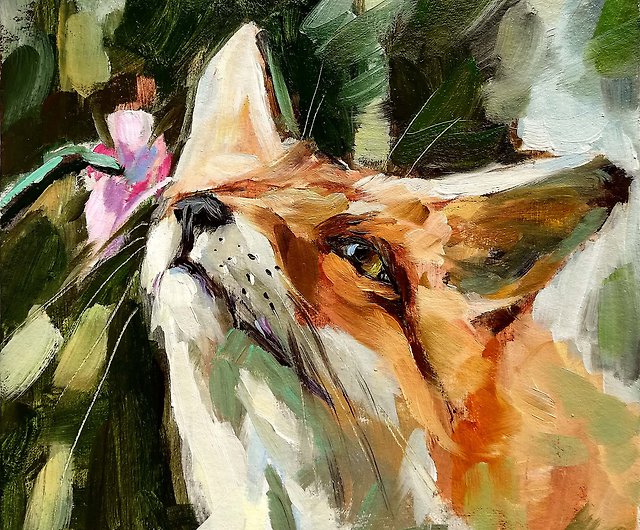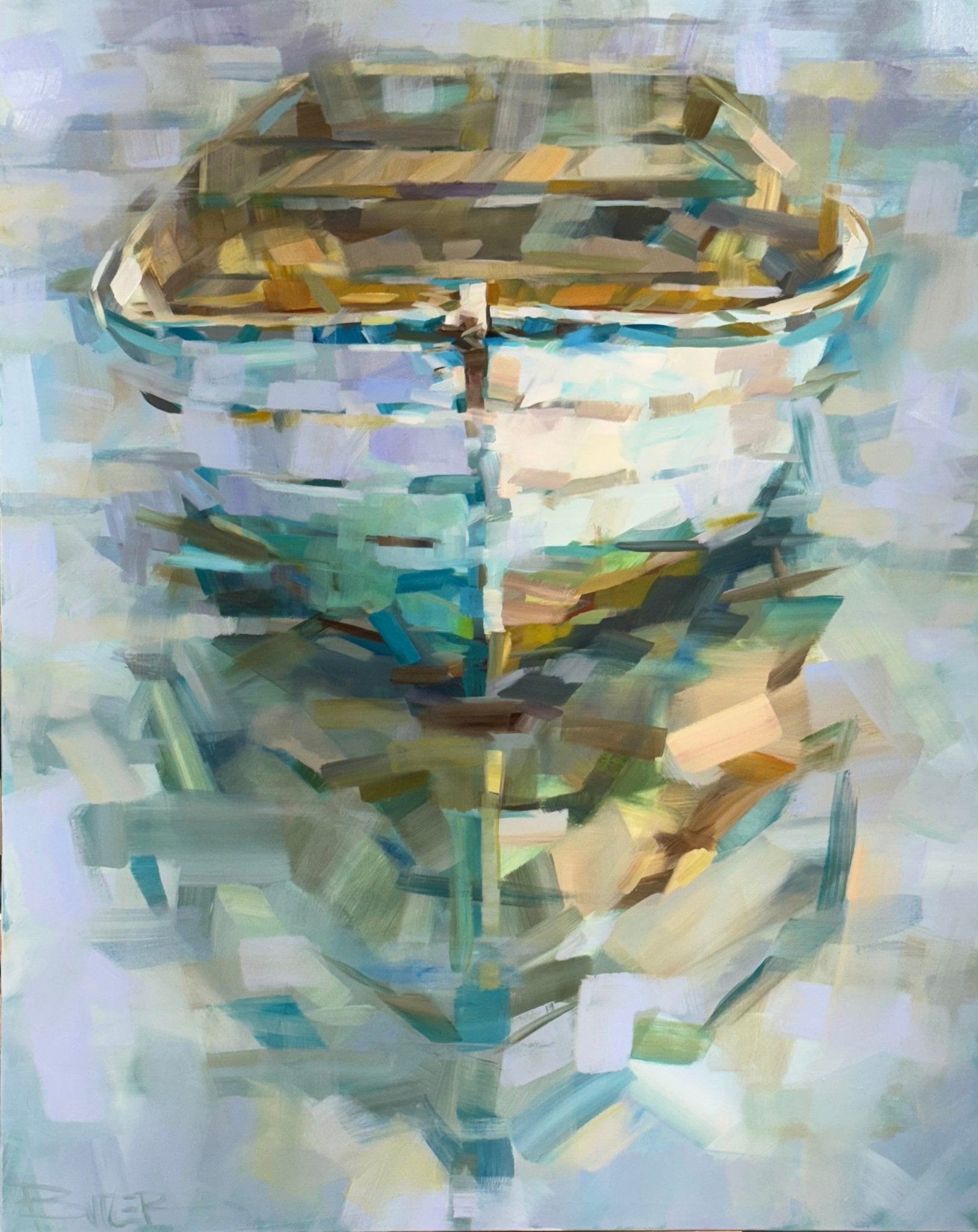Top-Tier Gallery Quality Oil Paintings for Sale Now
Top-Tier Gallery Quality Oil Paintings for Sale Now
Blog Article
Discovering All Concerning Oil Paints: An Overview to Recognizing Their Appeal and Value
Oil paintings have astounded target markets for centuries, using a peek into the artistic proficiency of different eras. Their rich background is intertwined with innovative techniques and extensive emotional expression. Comprehending the products and approaches behind these art work can improve recognition. Furthermore, the market for oil paints provides opportunities for financiers and collectors alike. As one discovers this interesting globe, the concern occurs: what makes an oil paint genuinely beneficial?
The Background of Oil Painting: A Trip Via Time
Oil painting has origins that date back to ancient times, it genuinely thrived throughout the Renaissance, when artists uncovered its flexibility and abundant color capacity. Early examples can be mapped to the 7th century, with techniques advancing significantly throughout cultures. The medium came to be popular in Northern Europe in the 15th century, specifically through the jobs of musicians like Jan van Eyck, who originated its usage for comprehensive realistic look and vibrant colors. This duration marked a separation from tempera paints, permitting better depth and structure. As oil paint spread, it affected many artists, bring about work of arts by popular figures such as Leonardo da Vinci and Rembrandt. The medium's heritage continues, shaping the art globe well right into modern times.
Comprehending Oil Repaints: Products and Techniques
As musicians explore the world of oil paints, they experience a varied array of materials and methods that specify this tool. The key parts of oil paint include pigments, which offer color, and drying out oils, such as linseed, that bind the pigments and help with application. Different additives can customize the paint's structure and drying out time, boosting versatility. Techniques like glazing, where transparent layers are accumulated, and impasto, which includes using thick paint, permit various visual results. Additionally, using brushes, palette knives, and also fingers can develop unique textures and finishes. Recognizing these materials and methods makes it possible for artists to totally reveal their creative thinking and attain the preferred effect in their artwork.
The Role of Shade in Oil Paints
Shade plays an essential function in oil paints, affecting both visual allure and emotional vibration. Comprehending color theory basics, including the partnerships between hues, can boost an artist's capacity to communicate state of mind and environment. Furthermore, mastering shade blending methods enables higher deepness and richness in a paint's palette.

Color Theory Essential
Comprehending color theory is crucial for artists dealing with oil paints, as it forms the structure for creating harmonious and aesthetically appealing make-ups. Color theory incorporates the research study of exactly how colors connect, the shade wheel, and the connections between key, secondary, and tertiary shades. Artists utilize corresponding shades to improve contrasts and create prime focus, while similar colors advertise unity and cohesiveness within an item. Furthermore, the principles of cozy and cool shades influence the perception of deepness and space in a paint. Comprehending these principles permits musicians to adjust shade properly, guiding the viewer's eye and interacting their desired message. Mastery of color concept ultimately enhances a musician's capacity to convey feelings and concepts via their job.
Emotional Impact of Shade
The emotional effect of shade in oil paintings plays a crucial function in how customers link and regard with artwork. Shades stimulate particular sensations and moods, influencing the visitor's mood. Cozy colors like oranges and reds can create a sense of heat and power, while cool tones such as blues and eco-friendlies commonly stimulate calmness or self-contemplation. Artists purposefully pick shade schemes to improve narrative aspects, assisting the target market's emotional journey. The saturation and contrast of shades further amplify these results, drawing focus and developing focus. Inevitably, the interaction of colors in oil paints not only enhances their visual allure but also functions as a powerful medium for emotional expression, enriching the visitor's experience and interpretation.
Color Combining Techniques
While many aspects of oil paint add to the total make-up, understanding shade mixing methods is necessary for achieving wanted effects and deepness. Shade blending can be approached through various methods, consisting of the subtractive and additive procedures. Additive blending involves combining shades of light, while subtractive blending depends on pigments, where colors blend to develop brand-new shades. Artists often use a restricted palette to develop unified works, understanding the relationships in between main, secondary, and tertiary colors. Techniques such as glazing and scumbling better enhance deepness and luminance. By skillfully blending colors, an artist can evoke feelings, create focal factors, and achieve a feeling of realism, eventually elevating the paint's visual and emotional effect.
Famous Oil Painters and Their Iconic Works

Famed for their proficiency of shade and technique, oil painters have actually developed some of the most celebrated artworks in history. Distinguished musicians like Vincent van Gogh mesmerized target markets with his stirring brushwork in "Starry Evening," while Claude Monet's "Perception, Daybreak" laid the groundwork for Impressionism. Leonardo da Vinci's "Mona Lisa" stays an enduring symbol of artistic wizard, showcasing his ability in recording human expression. Rembrandt's "The Night Watch" illustrates his innovative usage of light and shadow. Various other notable numbers consist of Pablo Picasso, that revolutionized modern art with his strong testing in jobs like "Les Demoiselles d'Avignon," and Georgia O'Keeffe, whose dynamic representations of landscapes and blossoms aided define American modernism. Each musician's one-of-a-kind design contributed significantly to the oil painting landscape.
Just how to Evaluate the Quality of an Oil Paint
Examining the high quality of an oil paint entails a cautious assessment of workmanship methods, as well as an evaluation of color and make-up. Observing brushwork, layering, and the application of paint can reveal the artist's ability level. In addition, the interplay of colors and the general arrangement of components contribute considerably to the paint's aesthetic value.
Assessing Workmanship Strategies
A careful evaluation of craftsmanship strategies is essential for determining the top quality of an oil paint. Evaluators must first examine the application of paint; thick, distinctive brushstrokes may suggest an experienced hand, while overly consistent applications might indicate an absence of depth. oil paintings for sale. The layering technique is additionally important; the existence of lusters and differed thickness can improve brightness and complexity. In addition, the high quality of the materials made use of, such as the canvas and pigments, plays a considerable role in sturdiness and overall aesthetic. Attention to information in elements like sides and shifts in between colors shows the musician's commitment to their craft. Eventually, these strategies add to the painting's psychological effect and market price, offering as indications of the artist's ability and intent
Analyzing Color and Structure
While reviewing the quality of an oil painting, one should focus on the interaction of shade and composition, as these aspects are fundamental to the artwork's total impact. Color selections can evoke emotions and establish mood; as a result, the musician's palette need to be examined for harmony and contrast. A well-balanced composition directs the audience's eye and produces a sense of unity. Artists frequently utilize techniques like the guideline of thirds or leading lines to enhance visual rate of interest. In addition, the use of light and shadow can add depth, enhancing the three-dimensionality of the paint. Eventually, a successful oil painting marries shade and make-up, involving the audience and inviting a deeper appreciation of the musician's vision and method.
Caring for and Preserving Oil Paintings
Correct treatment and conservation of oil paints is essential for preserving their integrity and long life. To safeguard these art work, it is vital to display them far from straight sunlight, which can create fading and staining. Maintaining a stable setting with controlled temperature and moisture further help in stopping damage. Cleaning up ought to be done gently making use of a soft, dry towel, preventing any rough chemicals that might harm the paint or varnish. Normal evaluations for signs of degeneration, such as flaking or fracturing, are a good idea. When carrying or saving oil paints, correct cushioning and framework are required to stay clear of physical harm. Inevitably, thorough care adds to the aesthetic appeal and worth of oil paints in time.
The Marketplace for Oil Paints: Gathering and Investing
Recognizing the marketplace characteristics for oil paintings is crucial for capitalists and collection agencies alike. The value of these art work is influenced by numerous elements, consisting of the artist's reputation, historic relevance, and current patterns. Collectors commonly seek items that resonate directly while considering prospective appreciation in worth. Galleries and auctions serve as key venues for acquiring and selling, with costs fluctuating based on need and rarity. Purchasing oil paintings calls for research into the marketplace, as well as an understanding of authenticity and provenance. Furthermore, emerging artists may offer possibilities for considerable returns, while developed names can regulate high costs. Overall, a tactical technique to gathering can produce both visual enjoyment and monetary benefits.

Often Asked Concerns
What Are the Ecological Influences of Oil Paint Materials?
The environmental impacts of oil painting materials include the release of unstable natural substances (VOCs), dangerous waste generation, and source extraction for pigments. These factors add to air pollution and environmental read more destruction, raising worries among ecologically aware artists and customers.
How Do Various Canvases Influence Oil Painting Results?
Different canvases affect oil painting results significantly. Texture, absorbency, and surface quality can alter paint application, drying times, and color vibrancy. Artists frequently choose specific canvases to attain wanted impacts and improve their artistic expression.
Can Oil Paintings Be Recovered if Harmed?
Oil paints can certainly be restored if harmed. Specialist conservators utilize numerous techniques to fix rips, clean surface areas, and address discoloration, ensuring that the art work keeps its initial beauty and worth for future generations.
What Are the Indications of an Initial Oil Painting?
The signs of an initial oil painting consist of visible brush strokes, appearance variations, and an irregular canvas weave (oil paintings for sale). In addition, credibility may be confirmed with provenance, trademarks, and the visibility of a varnish layer unique to oil mediums
Exactly How Has Technology Influenced Modern Oil Paint Techniques?
Technology has considerably affected modern-day oil painting strategies by introducing electronic tools for preparation, enhanced products for texture and durability, and on the internet platforms for selling and sharing art, consequently expanding artists' imaginative possibilities and audience get to. Oil painting has roots that date back to old times, it truly grew throughout the Renaissance, when artists found its flexibility and abundant shade potential. The emotional influence of shade in oil paintings plays an essential function in just how audiences view and attach with artwork. While several facets of oil painting add to the total structure, mastering shade mixing techniques is important for attaining wanted impacts and deepness. Evaluating the high quality of an oil painting includes a cautious evaluation of workmanship strategies, as well as an evaluation of shade and make-up. While evaluating the quality of an oil painting, one should focus on the interplay of color and structure, as these aspects are essential to the art work's general effect.
Report this page